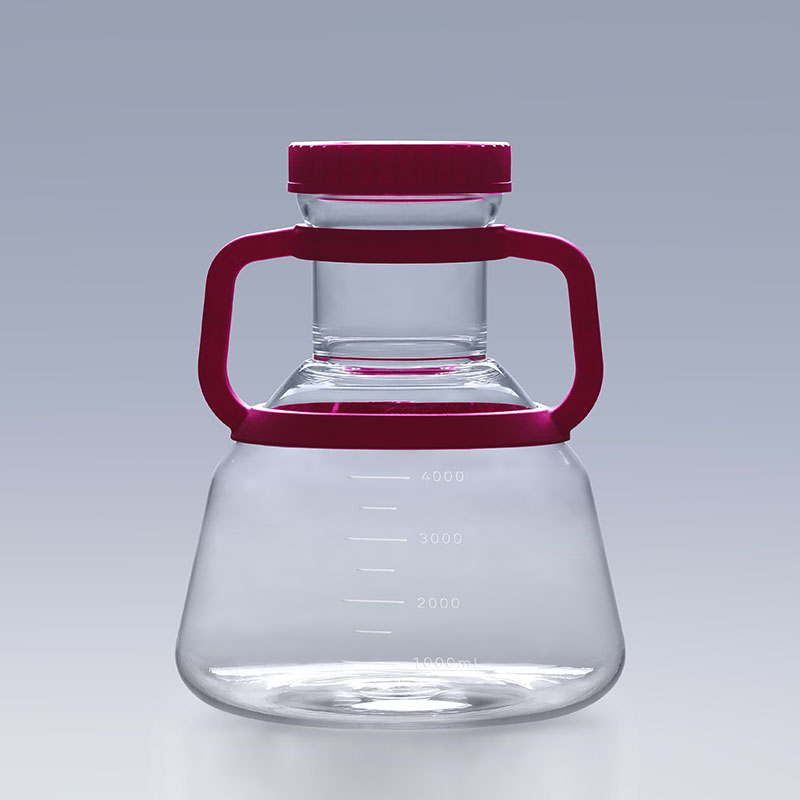Cell shake flasks are widely used in the fields of microbiology and cell biology. They can be used with large-capacity culture shakers and are suitable for full-time suspension culture, medium preparation or storage. Cells have very high requirements for the environment, so what material is generally used for cell shake flasks?
The material of the cell shake flask is mainly plastic, mostly polycarbonate (PC) material and PETG material. Polycarbonate (PC in English) is a high molecular weight polymer containing carbonate groups in the molecular chain. It is colorless, transparent, heat-resistant, impact-resistant, flame-retardant, BI-level, and has good mechanical properties at normal operating temperatures. It has a wide range of applications in the building materials industry, automobile manufacturing, medical equipment, aerospace, packaging, optical lenses and other fields. It can be used for medical cups, tubes, bottles, dental equipment, pharmaceutical containers and surgical equipment, and even Used as artificial organs such as artificial kidney and artificial lung.
PETG is a transparent, non-crystalline copolyester. Its products are highly transparent and have excellent impact resistance. It is especially suitable for forming thick-walled transparent products. It has excellent processing and molding properties and can be designed in any shape according to the designer's intention. It may use traditional extrusion, injection, blow molding and blister molding methods, which can be widely used in the market of plates, sheets, high-performance shrink films, bottles and profiled materials. At the same time, its secondary processing performance is excellent, and it can be used for Conventional machining modification.
Polycarbonate (PC) and PETG materials are commonly used materials for cell shake flasks. No matter which material is selected, it must meet the various needs of cell culture to ensure the smooth progress of cell culture.
The FAI climbed 5.9 percent year-on-year in the first 11 months of 2018, quickening from the 5.7-percent growth in Jan-Oct, the National Bureau of Statistics (NBS) said Friday in an online statement.
The key indicator of investment, dubbed a major growth driver, hit the bottom in August and has since started to rebound steadily.
In the face of emerging economic challenges home and abroad, China has stepped up efforts to stabilize investment, in particular rolling out measures to motivate private investors and channel funds into infrastructure.
Friday's data showed private investment, accounting for more than 60 percent of the total FAI, expanded by a brisk 8.7 percent.
NBS spokesperson Mao Shengyong said funds into weak economic links registered rapid increases as investment in environmental protection and agriculture jumped 42 percent and 12.5 percent respectively, much faster than the average.
In breakdown, investment in high-tech and equipment manufacturing remained vigorous with 16.1-percent and 11.6-percent increases respectively in the first 11 months. Infrastructure investment gained 3.7 percent, staying flat. Investment in property development rose 9.7 percent, also unchanged.
 English
English



















































